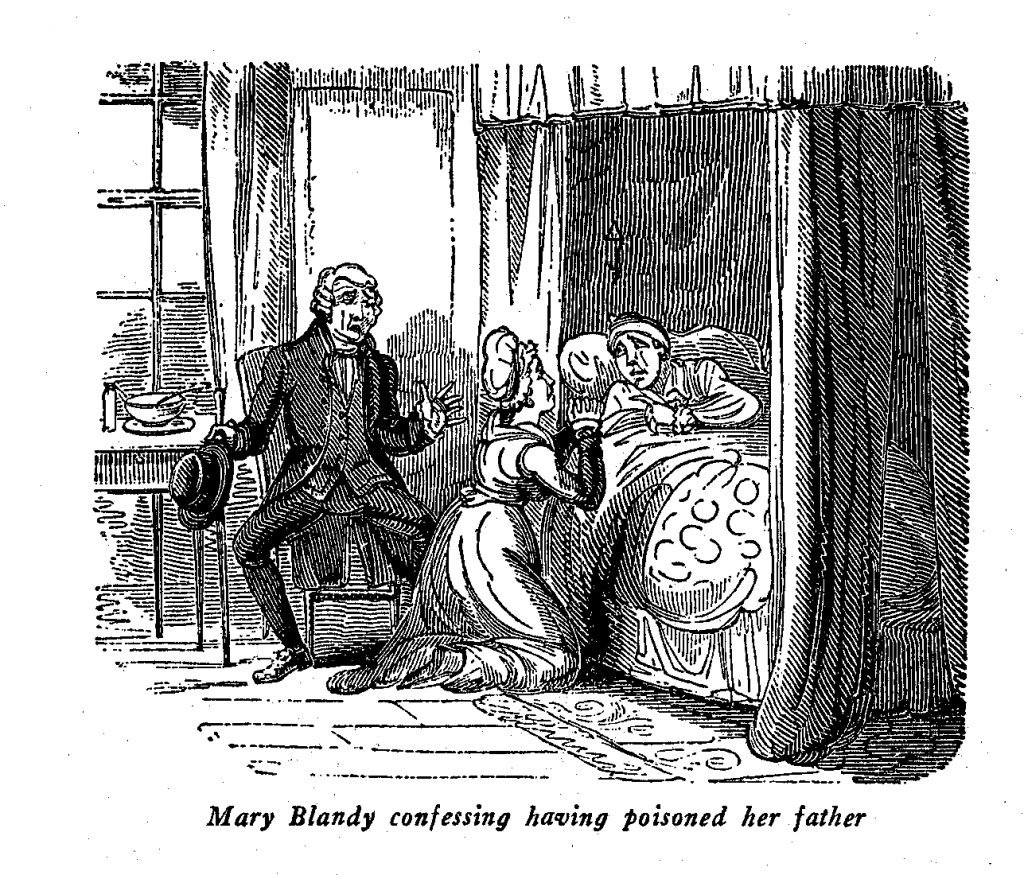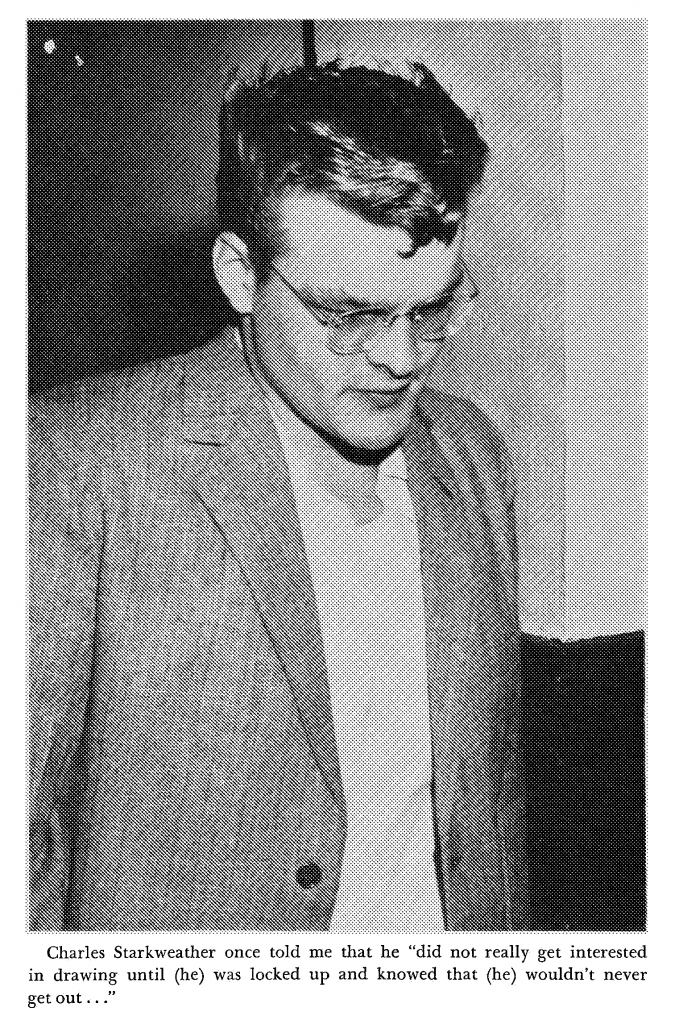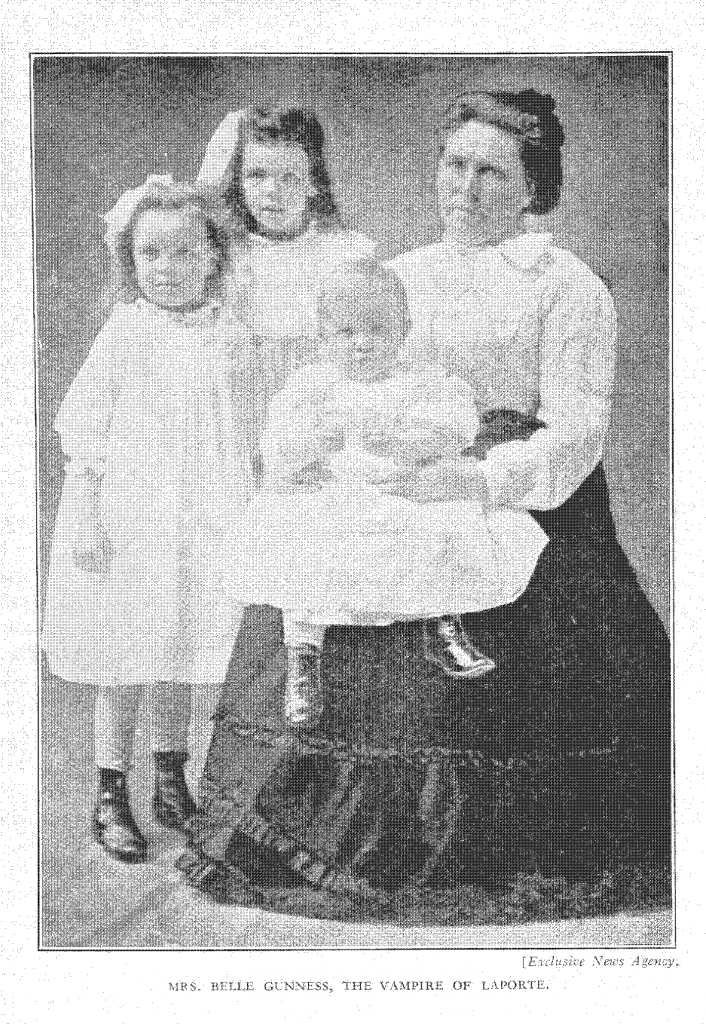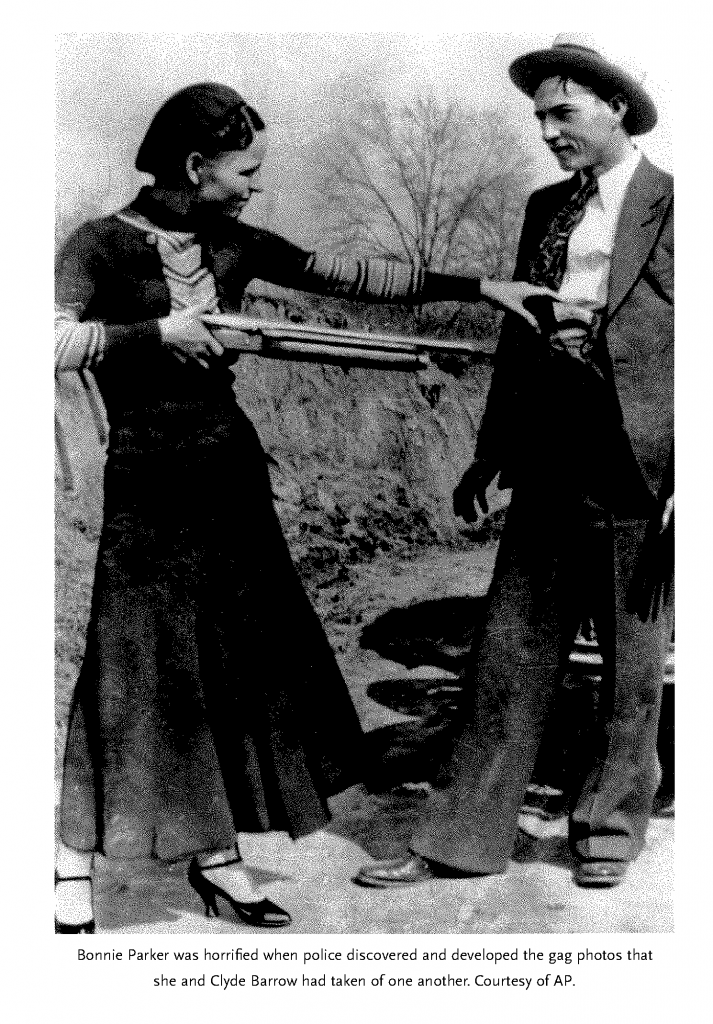Earlier this month on the HeinOnline Blog, we brought you tales of some weirder laws regulating love. To keep the love going, and to showcase even more hidden treasures buried within HeinOnline, we’re showcasing criminal couples who have given love a bad name. These people have committed crimes together, committed crimes for love, or taken advantage of the lovesick for their own nefarious means. It’s a tainted love, indeed.
1. Mary Blandy
Mary Blandy was an unlikely half of a criminal couple. She was an only child, born in Oxfordshire in 1720. Her father, Francis, was a well-respected and wealthy attorney. By all accounts, Mary was intelligent and well-educated, “of a sprightly and affable disposition, polite in manners, and engaging in conversation; and was uncommonly distinguished by her conversation.”[1]Criminal Recorder or an Awful Beacon to the Rising Generation of Both Sexes (1812). This book is found in HeinOnline’s World Trials Library. Like so many of her contemporaries, Mary had been permanently scarred by a bout of smallpox, and she wasn’t considered to be a great beauty, with her black eyes and black hair. But her wealth made her popular with bachelors, whom the Blandy family entertained in their home.
Despite her many suitors, Mary was still unmarried by the time she was twenty-six years old, an “old maid” by the day’s standards. Most accounts state Mary’s single status was due to her father[2]Tyburn Chronicle: Or, Villainy Display’d in All its Branches (1768). This book is found in HeinOnline’s World Trials Library.—despite having received many marriage proposals, none of the men were good enough in Francis’ eyes to marry his only child.
In 1746, Mary met Captain William Henry Cranstoun. Cranstoun was twice Mary’s age and the lesser son of a Scottish lord. At first, the pair did not hit it off. But by the next year they were engaged, and Cranstoun moved into the Blandy family home. There was just one small problem: Cranstoun already had a wife and child back in Scotland.[3]William Roughead, Editor. Trial of Mary Blandy (1914). This book is found in HeinOnline’s World Trials Library. Although Cranstoun claimed the marriage was invalid and in the process of being annulled, Francis suspected the soldier was simply after Mary’s fortune.
Mary’s mother died in 1749 and Francis, tired of Cranstoun’s excuses for why his marriage had not yet been annulled, kicked the bigamous solider out. Mary was devastated. The two lovers continued writing to each other, when Cranstoun discovered a magical solution: “love-powders,”[4]William Roughead, Editor. Trial of Mary Blandy (1914). This book is found in HeinOnline’s World Trials Library. or as we more commonly know them, a love potion. Plied with a love potion in his drink, Francis Blandy would approve of Cranstoun as his son-in-law and allow the couple to wed.
At first, Mary shrugged off the suggestion. Cranstoun persisted and in June 1751 he sent Mary a package containing the love-powder. Mary added the powder to her father’s tea and waited for it to take affect.
Of course, it wasn’t a love powder she had put in his drink. It was arsenic.
Mary continued to add the powder to her father’s food and drink, making him increasingly ill with every dose. By the time the remaining arsenic and the couples’ incriminating letters were discovered by Mary’s uncle, it was too late to intervene. At his bedside, Mary confessed to her father that she had been putting the powder into his food, but claimed she had no idea it was actually poison. Francis Blandy died on August 14, 1751.
Mary was tried for his father’s murder and found guilty. She was executed on March 6, 1752, maintaining until the end that she had no idea she was actually poisoning her father.[5]William Roughead, Editor. Trial of Mary Blandy (1914). This book is found in HeinOnline’s World Trials Library. As for Cranstoun, he escaped justice, fleeing overseas to Flanders, where he died on December 2, 1752.


2. Charles Starkweather and Caril Ann Fugate
Charles Starkweather was an eighteen-year-old high school dropout when he started dating thirteen-year-old Caril Ann Fugate, in 1956, in Lincoln, Nebraska. Bullied throughout his short school career, Starkweather “began to love fighting”[6]James Melvin Reinhardt. Murderous Trail of Charles Starkweather (1960). This book is found in HeinOnline’s World Trials Library. and had an explosive temper. He had a fascination with guns[7]James Melvin Reinhardt. Murderous Trail of Charles Starkweather (1960). This book is found in HeinOnline’s World Trials Library. and dreamed constantly that Death was close by,[8]James Melvin Reinhardt. Murderous Trail of Charles Starkweather (1960). This book is found in HeinOnline’s World Trials Library. watching.
In the early morning hours of December 1, 1957, Robert Colvert, a gas station attendant, was shot and killed. $100 was missing from the register. Starkweather was known to loiter around the gas station,[9]James Melvin Reinhardt. Murderous Trail of Charles Starkweather (1960). This book is found in HeinOnline’s World Trials Library. and had been seen there several times the previous night.
On January 21, 1958, Starkweather went to Caril Ann’s home. After arguing with her mother and step-father, Starkweather killed both parents and Caril Ann’s baby sister. The couple stayed in the house for several days before leaving on January 27th. Over the next three days, Starkweather murdered seven more people as he and Caril Ann traveled from Lincoln to Douglas, Wyoming. Carl Starkweather was nineteen years old; Caril Ann was only fourteen. They were finally arrested on January 29, 1958, in Wyoming and extradited back to Nebraska.
Carl Starkweather was only tried for the murder of Robert Jensen.[10]James Melvin Reinhardt. Murderous Trail of Charles Starkweather (1960). This book is found in HeinOnline’s World Trials Library. The teenager had stopped to offer Starkweather and Caril Ann a ride after seeing their car stuck in the mud; Jensen and his girlfriend were killed by Starkweather on January 27th. He was found guilty and executed on June 25, 1959.
Starkweather initially claimed Caril Ann had nothing to do with the murders, but later claimed she was an active participant. Caril Ann Fugate was convicted of murder and sentenced to life in prison, but she was paroled in 1976.

3. Belle Gunness
Before dating apps and swiping right, people looking for love outside their social circle often turned to newspapers, placing personal advertisements describing themselves and what they were looking for in a partner. Derogatorily called “lonely hearts ads,” these personal advertisements date as far back as the 1600s and proliferated throughout the 19th and 20th centuries.
Born in Norway, Belle came to the United States and settled in Chicago with her husband, Mads Sorensen. In 1900, Mads died, and Belle collected his $8,500 life insurance policy.[11]Thomas S. Duke. Celebrated Criminal Cases of America (1910). This book is found in HeinOnline’s World Trials Library. Money in hand, she moved around Illinois, constantly displaced by fires that destroyed her subsequent homes and businesses. Luckily for Belle, she had her properties insured, and she collected a payout on each tragedy.
Eventually, Belle bought a farm near La Porte, Indiana, and found love again, marrying Peter Gunness in 1902. They lived with Belle’s two surviving children from her marriage to Sorensen, Peter’s children, and an adopted daughter, fourteen-year-old Jenny. Tragically, only a few months after their wedding, Peter died in a bizarre accident, when a meat grinder fell off a shelf and crushed his skull. Although local gossip whispered Belle had killed Peter, nothing was proven. Two years later, Jenny left the farm, sent to Los Angeles to finish her education.
In 1906, Belle was looking for love. She placed a personal ad in several large newspapers, describing herself as a “comely widow who owns a large farm…desires to make acquaintance with a gentleman equally well provided, with view of joining fortunes.”[12]Thomas S. Duke. Celebrated Criminal Cases of America (1910). This book is found in HeinOnline’s World Trials Library. She ended her ad by telling all prospective suitors that in order to be considered, they had to pay her a personal visit.
Many men answered Belle’s ads. But while these men were seen arriving in town, they weren’t seen leaving. One prospective suitor, Ole B. Budsburg, a widower from Wisconsin, was last seen with a large amount of money at the La Porte Savings Bank. The steady stream of men to Belle’s farm continued until April 28, 1908, when Belle’s home burned to the ground. In the smoldering wreckage, authorities found the headless body of a woman and three children. Belle’s longtime farmhand, Ray Lamphere, was arrested. As investigators began digging around Belle’s farm, they uncovered the remains of at least 14 people, including Ole Budsburg and Belle’s adopted daughter, Jenny, and the truth of what had been going on at the Gunness farm: Belle had been using ads to lure bachelors to the farm, telling them to bring with them money to help her pay her mortgage. Once on the farm, she killed the men and took their money. Many of her victims were never positively identified.
Ray Lamphere was charged with the murder of Belle Gunness and with arson. Lamphere maintained he was innocent and that the woman found in the house was not, in fact, Belle. He had several supporters; neighbors testified that the corpse wasn’t tall enough or big enough[13]Stewart H. Holbrook. Murder out Yonder: An Informal Study of Certain Classic Crimes in Back-Country America (1941). This title is found in HeinOnline’s History of Capital Punishment. to be Belle. Lamphere was acquitted of murder but convicted on the arson charge; he died in prison in 1909.
Shortly before his death, Lamphere claimed Belle had murdered 42 men on her farm—and gotten away with it. She lured a woman to the farm on the pretext of hiring her as a servant. Belle killed the unnamed woman, and dressed her in her own clothing. Belle then killed her own children, the two daughters she had with Sorensen and the son she had with Gunness. Finally, Belle set fire to the house and made her escape. Whether Belle Gunness, one of the original lonely hearts killers, was killed in 1908 by Ray Lamphere or escaped justice, is unknown to this day.

4. Ian Brady and Myra Hindley
Ian Brady and Myra Hindley are two of the 20th century’s most notorious serial killers. Between 1963 and 1965, Ian, aged twenty-seven, and his girlfriend, Hindley, aged twenty-three, abducted and killed five children in Manchester, England. The couple were amateur photographers and heavy drinkers, with a fascination with Nazi Germany and grand plans to rob a bank.[14]A. Benfield, The Moors Murders, 41 Police J. 147 (1968). This article is found in HeinOnline’s Law Journal Library. One of their favorite pastimes was to drive out to the Yorkshire moors, sometimes even spending the night there sleeping in their car.
Brady and Hindley’s victims were all children between 10 and 17 years old. They lured their victims into the couples’ car by promising to give them a ride. Once in the car, the couple either took their victim back to their apartment or drove out to the secluded moors, explaining the detour by saying they needed help looking for a lost glove. Brady and Hindley buried their victims on Saddleworth Moor, often returning to the burial sites to photograph themselves standing over the graves.
The couple were eventually turned in by Hindley’s brother-in-law, David Smith.[15]A. Benfield, The Moors Murders, 41 Police J. 147 (1968). This article is found in HeinOnline’s Law Journal Library. Smith had been summoned to the couple’s apartment by Brady to retrieve some miniature bottles of wine. While waiting in the kitchen, Smith heard a scream from the living room. Bursting in, he saw Brady striking seventeen-year-old Edward Evans in the head with a hatchet. Somehow, Evans managed to attempt an escape before being strangled to death by Brady.
Brady had twisted his ankle in the struggle and convinced Smith to help him move the body out of the apartment the next night. Instead, the next morning, Smith called the police.
Ian Brady was tried and convicted in 1966[16]Therese Murphy & Noel Whitty, The Question of Evil and Feminist Legal Scholarship, 14 Feminist L. Stud. 1 (2006). This article is found in HeinOnline’s Law Journal Library. of the murders of Edward Evans, Leslie Ann Downey, and John Kilbride. Myra Hindley was also found guilty in the murders of Downey and Evans and as an accessory in the murder of Kilbride. Both were given mandatory life sentences. In 1987, Hindely confessed the couple had killed two additional victims. She also confessed that she had been more involved in the murders than she had originally claimed. While Hindley revealed the location of one additional grave on Saddleworth Moore, the remains of one of the victims, Keith Bennet, have never been found.
Ten years later, Hindley tried unsuccessfully to have her sentence reduced. Myra Hindley, described as “Britain’s most hated woman,”[17]Therese Murphy & Noel Whitty, The Question of Evil and Feminist Legal Scholarship, 14 Feminist L. Stud. 1 (2006). This article is found in HeinOnline’s Law Journal Library. died in 2002. Brady was diagnosed as a psychopath in 1985 and sent to a psychiatric hospital, where he refused to work with doctors. Brady died in 2017.
5. Clyde Barrow and Bonnie Parker
No discussion of criminal couples would be complete without mentioning Bonnie and Clyde, perhaps the most famous criminal couple in American history. Between 1932 and 1934,[18]Laura Browder. Her Best Shot: Women and Guns in America (2006). This book is found in HeinOnline’s Gun Regulation and Legislation in America. the couple killed twelve people and took as many hostages as they committed multiple robberies across eight states. Even in their time, Bonnie and Clyde fascinated the press. The couple worked hard to cultivate their image: they took pictures of themselves striking their fiercest gangster poses and sent stories about themselves to detective magazines; Clyde allegedly even wrote a letter[19]Laura Browder. Her Best Shot: Women and Guns in America (2006). This book is found in HeinOnline’s Gun Regulation and Legislation in America. to the Ford Motor Company, boasting that Ford was his favored brand of car to steal.
Bonnie Parker was 19 and separated from her husband when she met Clyde Barrow in 1930.[20]United States. FBI: A Centennial History, 1908-2008 (2008). This book is found in HeinOnline’s U.S. Federal Agency Documents, Decisions, and Appeals. Barrow was 21 years old and an ex-con. They started their robbing spree almost immediately, until Clyde was arrested. But when he was paroled in 1932, the couple reunited and began their legendary crime spree, joined by several other gang members, including Clyde’s brother and sister-in-law.
Public opinion on the couple turned from reverence to disdain after the murder of two Texas Highway Patrol officers on Easter Sunday, 1934, in Grapevine, Texas.[21]Jody Edward Ginn & John Fusco, Grapevine Revisited: Bonnie and Clyde and the Eastern Sunday Murders, 9 TSCHS J. 72 (2019). This article is found in HeinOnline’s Law Journal Library. Called to reports of a suspicious Ford parked on the side of the highway, the two officers approached the car and were immediately shot by Bonnie and Clyde. Eyewitnesses reported that Bonnie killed one wounded officer at point-blank range.
The FBI joined the hunt for Bonnie and Clyde in May 1933 on interstate car theft charges.[22]United States. FBI: A Centennial History, 1908-2008 (2008). This book is found in HeinOnline’s U.S. Federal Agency Documents, Decisions, and Appeals. Eventually, the FBI connected the couple to Henry Methvin in Louisiana and persuaded Methvin to help them capture Bonnie and Clyde.
On May 23, 1934,[23]Laura Browder. Her Best Shot: Women and Guns in America (2006). This book is found in HeinOnline’s Gun Regulation and Legislation in America. Bonnie and Clyde were killed by lawmen in an ambush in rural Louisiana. The bullet-riddled car that the pair died in was a popular touring exhibit for many years, and today is on display in a casino in Primm, Nevada. Some 30,000 people attended Clyde Barrow’s funeral, with nearly as many showing up to Bonnie Parker’s. The largest wreath at Bonnie’s funeral was sent by a group of Dallas newspaper boys, “perhaps in thanks for the half million newspapers the account of the final ambush had helped them to sell.”[24]Laura Browder. Her Best Shot: Women and Guns in America (2006). This book is found in HeinOnline’s Gun Regulation and Legislation in America.

Here at the HeinOnline blog, we’re dedicated to unveiling the wealth of content in our millions of digitized pages, and writing blog posts on topics of all shapes and sizes. Be sure to subscribe; you never know what you might find.
HeinOnline Sources[+]
| ↑1 | Criminal Recorder or an Awful Beacon to the Rising Generation of Both Sexes (1812). This book is found in HeinOnline’s World Trials Library. |
|---|---|
| ↑2 | Tyburn Chronicle: Or, Villainy Display’d in All its Branches (1768). This book is found in HeinOnline’s World Trials Library. |
| ↑3, ↑4, ↑5 | William Roughead, Editor. Trial of Mary Blandy (1914). This book is found in HeinOnline’s World Trials Library. |
| ↑6, ↑7, ↑8, ↑9, ↑10 | James Melvin Reinhardt. Murderous Trail of Charles Starkweather (1960). This book is found in HeinOnline’s World Trials Library. |
| ↑11, ↑12 | Thomas S. Duke. Celebrated Criminal Cases of America (1910). This book is found in HeinOnline’s World Trials Library. |
| ↑13 | Stewart H. Holbrook. Murder out Yonder: An Informal Study of Certain Classic Crimes in Back-Country America (1941). This title is found in HeinOnline’s History of Capital Punishment. |
| ↑14, ↑15 | A. Benfield, The Moors Murders, 41 Police J. 147 (1968). This article is found in HeinOnline’s Law Journal Library. |
| ↑16, ↑17 | Therese Murphy & Noel Whitty, The Question of Evil and Feminist Legal Scholarship, 14 Feminist L. Stud. 1 (2006). This article is found in HeinOnline’s Law Journal Library. |
| ↑18, ↑19, ↑23, ↑24 | Laura Browder. Her Best Shot: Women and Guns in America (2006). This book is found in HeinOnline’s Gun Regulation and Legislation in America. |
| ↑20, ↑22 | United States. FBI: A Centennial History, 1908-2008 (2008). This book is found in HeinOnline’s U.S. Federal Agency Documents, Decisions, and Appeals. |
| ↑21 | Jody Edward Ginn & John Fusco, Grapevine Revisited: Bonnie and Clyde and the Eastern Sunday Murders, 9 TSCHS J. 72 (2019). This article is found in HeinOnline’s Law Journal Library. |



